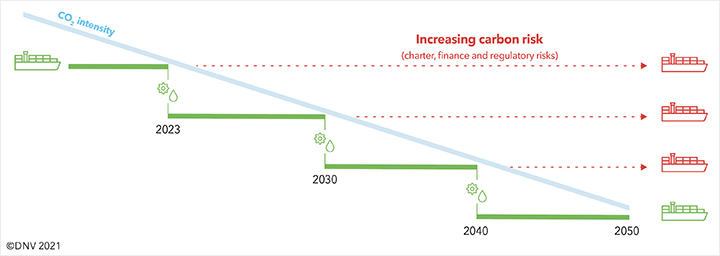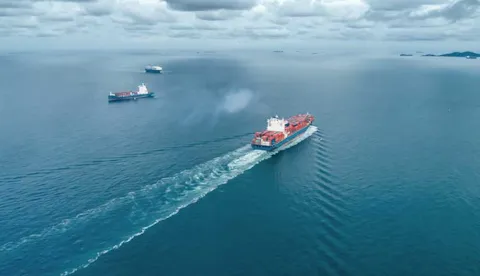PATHWAYS
Finding the right pathway towards decarbonization will be the key to sustained success for shipowners and operators.
While the biggest impact on decarbonization will be the choice of fuel and energy converter, these fuel and technology shifts must go together with greater energy efficiency of ships, requiring intensified uptake of both technical and operational energy-efficiency measures.
While all vessels can make some use of efficiency technologies and explore alternative fuels, individual strategies must be shaped based on the type of vessels they operate, the cargo, and the route. Decarbonization will also drive logistics optimization, including the use of measures such as increased fleet utilization and speed reductions – facilitated by digitalization.
Newbuilds will, of course, have more available options than ships in operation. Abatement measures such as wind power, air lubrication systems, and hull and machinery measures, are now emerging - some almost as standard features.
For retrofits, there are inherent limitations that will rule out some measures and make a cost benefit analysis even more critical. Even so, because a vessel’s largest operational cost is fuel, well planned abatement measures can have a negative cost over the lifetime of the vessel – all while helping to ensure GHG emission compliance.
Figure: The decarbonization stairway and potential exposure to carbon risk



